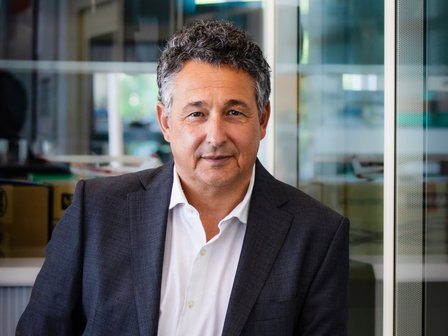Translated with DeepL
Authors: Daniel Gygax and Kaspar Eigenmann
For hearing expert and innovator Stefan Launer, the healthy ear is one of the most impressive sensory organs. It can process sounds, speech and noises into electronic impulses. These are interpreted in the brain and can trigger emotional, physical or cognitive reactions. This sophisticated process provides hearing care professionals with a wealth of physical parameters such as hearing threshold, frequency, sound pressure level, speech intelligibility, temporal latency and binaural difference. These are at the beginning of the research and development of new functionalities.
The basic version of hearing aids contains a microphone, signal processor, amplifier, loudspeaker and power supply. They convert the incoming sound into the frequency ranges that are still audible to the wearer. In the process of product optimisation, the hearing aids are now constantly being equipped with new functions that are tailored to the wearer's personal needs. For example, they now focus on people speaking in noisy environments. This is achieved by reducing background noise or strong wind noise and emphasising what is being said. Today's devices also have a Bluetooth connection and app control.
It is therefore not surprising that sensors are a major topic for Sonova. Stefan Launer can even imagine that important health factors such as blood oxygen, pulse and temperature will in future be measured by sensors integrated into the hearing aid.
Signal processing is crucial for adapting hearing aids to the wearer's hearing impairment and current hearing situation. Recently, artificial intelligence has also been used here, which is quite complex and requires a lot of power. "We had to develop a special chip for this," explains Stefan Launer. The current chip technologies in Phonak hearing aids are called ERA and Deepsonic. Computing power and memory capacity are increased in the newly designed ERA chip. This ensures a considerably faster response time and therefore improved adaptation to changing hearing situations. The Deepsonic chip uses real-time AI to improve speech understanding in difficult listening environments and can automatically adapt to recurring situations.

"Language is the social glue between people - and that requires hearing."
Stefan LaunerPower supply has been an ongoing challenge since the first hearing aid was manufactured in 1950, mainly because the many new functions are power guzzlers - especially AI today. Battery development, on the other hand, has been linear with a slow increase over the last 100 years. This is in contrast to microelectronics, which has seen an exponential increase in energy efficiency. From Stefan Launer's point of view, load peaks are a particular challenge because it is difficult to manage large current fluctuations in microelectronic devices. These load profiles have severely restricted the choice of battery technology. The current can fluctuate between a factor of 5 and 10, which is damaging for a battery. Even the constant adaptation to hearing situations has an influence on the energy requirements of the device. The devices therefore optimise energy consumption through adaptive adjustment and amplification, automatic switching on and off as required and efficient Bluetooth streaming.
Many challenges have to do with the individual needs and systems of hearing aid users. "We had a hearing system that could completely cancel impulsive sounds. However, a tennis player told us that although the feature worked great, she couldn't use the hearing aid because she could no longer hear the impact of the ball." The User Experience and Usability Designer and Holistic Hearing Care teams are also made up of technology-oriented psychologists who optimise user-friendliness. This is important because one difficulty in everyday life, for example, is how users can tell the device that they want to hear voice A and not voice B.
Sonova offers hearing aids in all price categories, whereby the price also includes support from specialised staff. It is important to recognise a reduction in hearing ability at an early stage. "Untreated hearing loss leads to much higher healthcare costs," Stefan Launer is convinced. This is especially true in our ageing population. Improving hearing ability increases quality of life and can help to recognise certain diseases such as diabetes, cardiovascular diseases, dementia or depression earlier or control them better.
In the event of hearing loss, vascular health should also be checked , especially in people with various risk factors. A link between vascular disease and hearing loss is the subject of clinical studies. In this sense, Sonova increasingly sees itself in a larger context and in a network of healthcare providers.
Stefan Launer points out that the urge to drive innovation is part of a deeply rooted and practised culture at Sonova. The motto is: "Nothing works without people", meaning that nothing works without people. Sonova also has the courage to invest, as a three-digit million Swiss franc sum was spent on the development of the latest generation of chips. A large part of the research and development work is carried out in-house. But Sonova has also benefited from co-operation with the two Federal Institutes of Technology, universities and universities of applied sciences.
Just as important as the research cooperation are the excellent training programmes offered in Switzerland - from apprenticeships to doctorates. This is because the manufacture of hearing aids requires a wide range of skills, such as basic knowledge of acoustics, signal processing, electronics, handling specific software, micro-assembly, soldering technology, manual skills, programming languages, programming hearing aids, error analyses, test procedures, fitting hearing systems, 3D printing techniques, component design and much more.
Sonova epitomises the ideal Swiss company, orchestrating the combination of technical, theoretical and mental skills on the way from an idea to a valuable product.